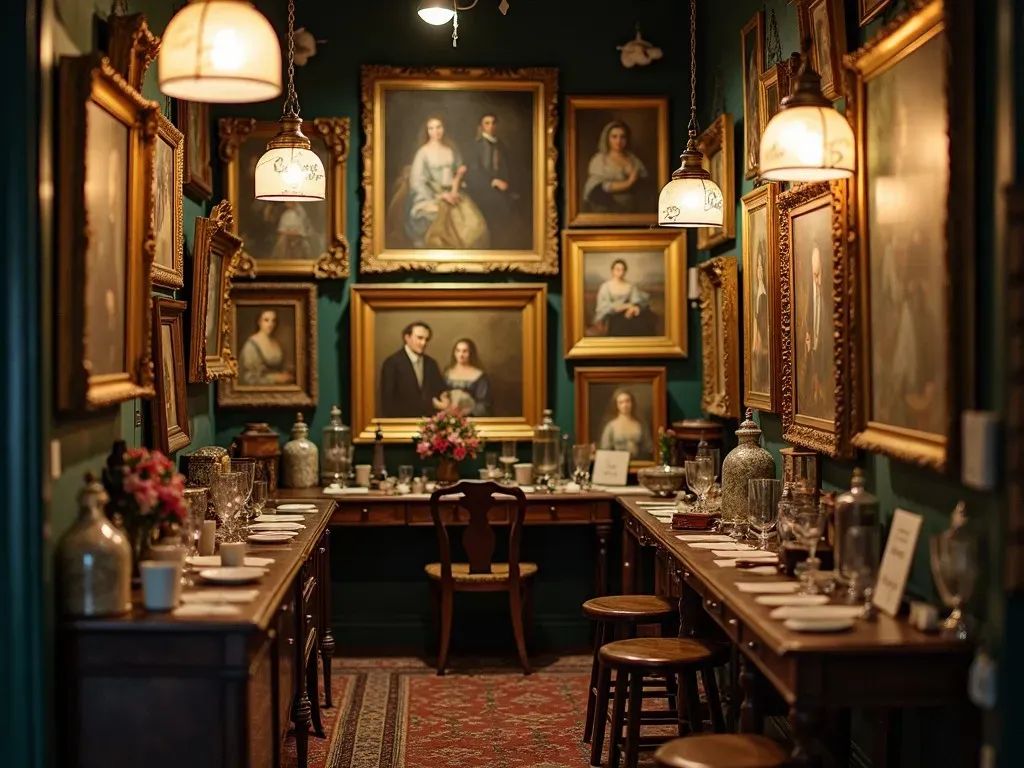Old portrait painting, a captivating art form that has encapsulated the human experience for centuries, stands as a testament to the artistic mastery of times gone by. These artworks not only serve as a window into history but also reflect the societal values, cultural nuances, and personal stories of their subjects. Let’s dive deeper into the world of old portrait painting, exploring iconic works, their significance, and how they continue to influence contemporary art.
Understanding Old Portrait Painting
Old portrait painting refers to artworks created primarily from the late Middle Ages to the 19th century, characterized by their focus on capturing the likeness, personality, and status of individuals. Notable Artists such as Leonardo da Vinci, Rembrandt, and Vermeer are celebrated for their contributions to this genre, producing works that are now regarded as masterpieces.
Key Characteristics of Old portrait paintings
| Characteristic | Description |
|---|---|
| Composition | Often centered around a single subject, emphasizing facial expressions and posture. |
| Technique | Use of oil paints to create depth, detail, and realism, especially in skin tones and textures. |
| Historical Context | Many portraits were commissioned to commemorate important figures or events, revealing social hierarchies. |
| Symbolism | Symbols of power, wealth, and virtue were often included, offering insights into the subject’s life. |
Famous Old Portrait Paintings
Several portraits from history have achieved immense fame due to their artistic significance and the stories behind them. Here are some of the most iconic:
-
Mona Lisa (Leonardo da Vinci)
Created between 1503 and 1506, this portrait of Lisa Gherardini is renowned for her enigmatic smile and has drawn viewers for centuries.- Style: Renaissance
- Location: Louvre Museum, Paris
-
Self-Portrait with Two Circles (Rembrandt)
Painted in 1665, this work showcases Rembrandt’s mastery of light and shadow, reflecting his own complex character.- Style: Baroque
- Location: Kenwood House, London
-
Girl with a Pearl Earring (Johannes Vermeer)
Often referred to as the "Mona Lisa of the North," this 17th-century painting highlights Vermeer’s skill in capturing light and texture.- Style: Dutch Golden Age
- Location: Mauritshuis, The Hague
Facts and Figures on Portrait Painting
| Year | Famous Work | Artist | Location |
|---|---|---|---|
| 1503 | Mona Lisa | Leonardo da Vinci | Louvre Museum, Paris |
| 1665 | Self-Portrait with Two Circles | Rembrandt | Kenwood House, London |
| 1665 | Girl with a Pearl Earring | Johannes Vermeer | Mauritshuis, The Hague |
| 1907 | Portrait of Adele Bloch-Bauer I | Gustav Klimt | Neue Galerie, New York |
The Evolution of Old Portrait Art
Old portrait art has evolved through various art movements, each marked by distinctive styles and Techniques. The transition from the detailed realism of the Renaissance to the emotive brushwork of Impressionism demonstrates not only changes in artistic technique but also shifts in societal values and perceptions of individuality.
Historical Movements Impacting Portraiture
-
Renaissance (14th-17th century): Emphasis on humanism, realism, and classical philosophy. Artists like Michelangelo sought to depict both physical beauty and inner virtue.
-
Baroque (17th-18th century): Characterized by dramatic use of light and shadow, Baroque portraits highlight emotional depth. Artists like Caravaggio manipulated light to enhance storytelling.
-
Romanticism (late 18th century-19th century): This period moved away from realism and often emphasized emotion, imagination, and nature. Portraits became more expressive, highlighting the individual’s inner feelings.
Antique Portraits for Sale: Collecting Old Portrait Art
For enthusiasts and collectors, the market for antique portraits offers a unique glimpse into history and artistic evolution. Many antique portraits are available for sale, providing opportunities for collectors to own a piece of art history.
Where to Find Antique Portraits
- Auction Houses: Renowned auction houses such as Sotheby’s and Christie’s often feature collections of historical portraits.
- Art Galleries: Many galleries specialize in antique art and frequently showcase vintage portrait pieces.
- Online Platforms: Websites dedicated to art sales, such as Artsy and 1stdibs, offer a wide range of antique portraits for collectors.
Tips for Collectors
- Research Provenance: Understand the history and authenticity of the portrait to ensure its value.
- Condition Assessment: Check for any damage or alterations that could affect the artwork’s worth.
- Engage with Experts: Consult art appraisers or historians to gain insights into art valuations and investment aspects.
FAQs About Old Portrait Painting
What is the significance of old portrait paintings?
Old portrait paintings are significant as they offer insights into historical figures, cultural attitudes, and artistic techniques of their time. They help us understand the social context in which the subjects lived.
Who are the most famous old portrait painters?
Renowned portrait painters include Leonardo da Vinci, Rembrandt, Johannes Vermeer, and Gustav Klimt, each known for their unique styles and contributions to the genre.
How has technology impacted portrait painting?
With the advent of photography and digital art, traditional portrait painting has evolved. Artists now blend classical techniques with modern technology, allowing for new forms of expression in portraiture.
For further reading on famous portrait paintings, visit Fine Art Tutorials.
